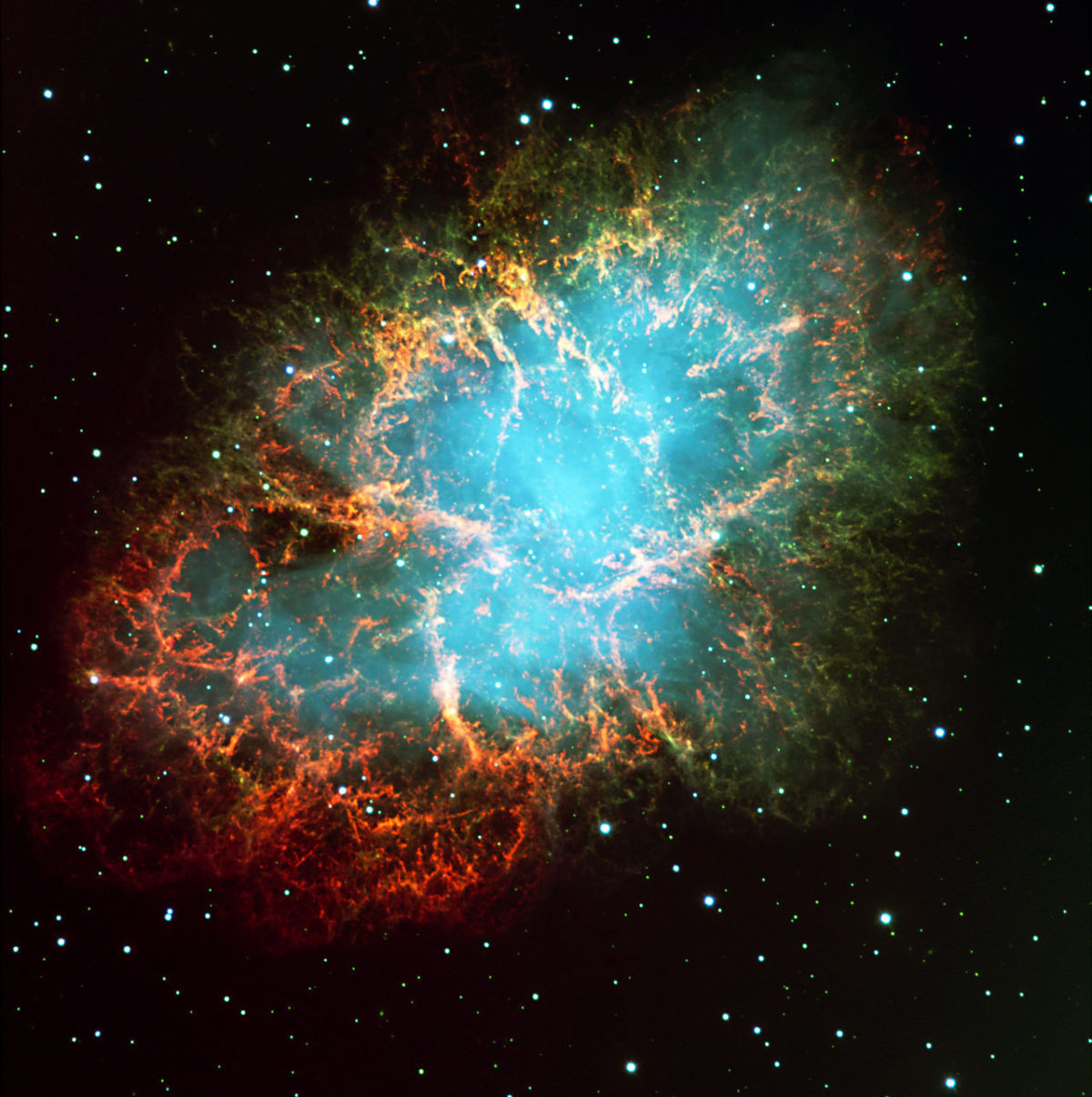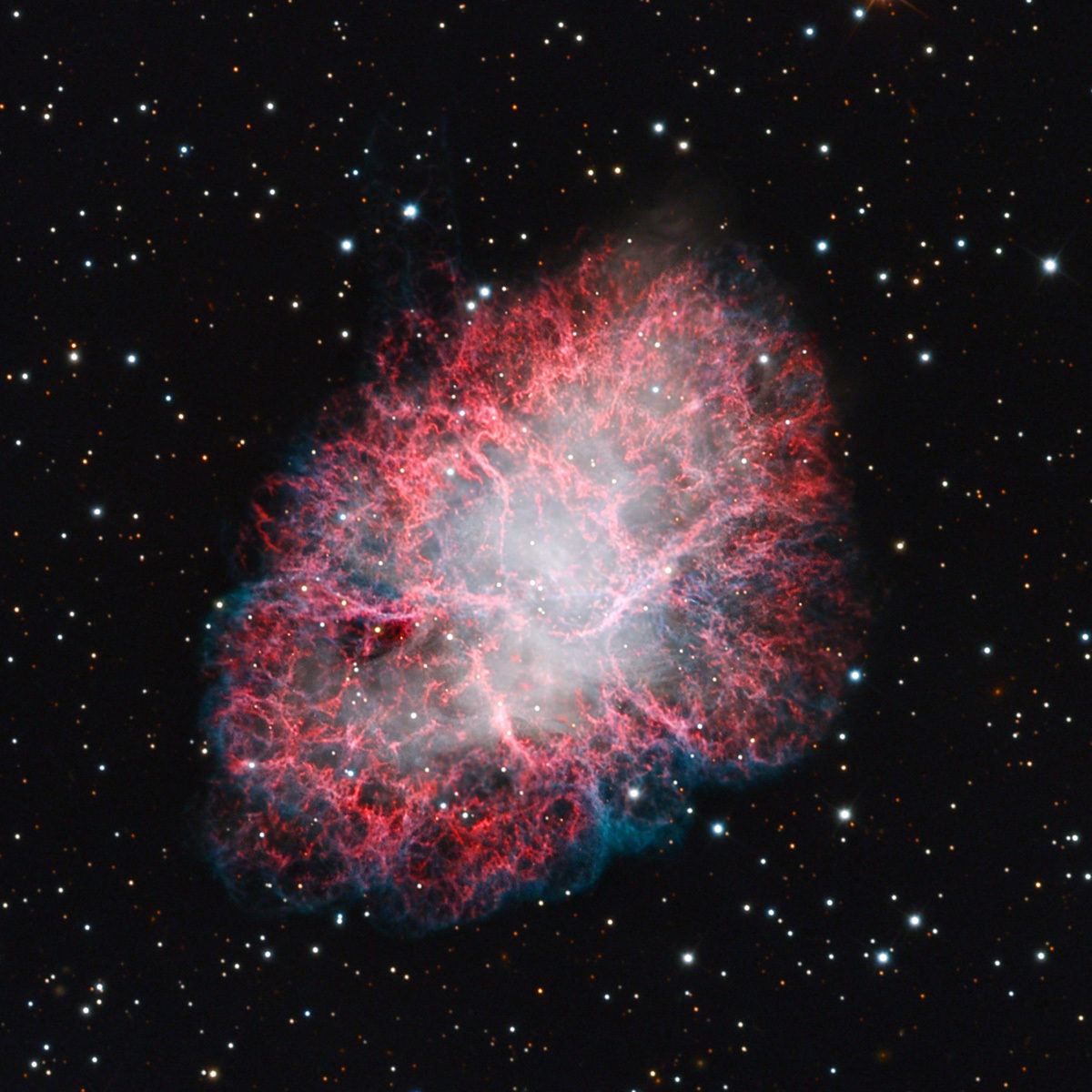Jason Davis • Aug 09, 2013
The coolest video of an expanding supernova you'll see today
When you look at the Crab Nebula, it's hard to fathom you're seeing exploded star remnants zipping outward through space at 3 million miles per hour. After all, you could stare all night at the nebula—located some 6,500 light years from Earth—and fail to notice even a hint of motion.
However, if you wait, say, 13 years, you'll definitely detect some movement. That's exactly what professional astrophotographer Adam Block did, using two images of the Crab Nebula taken more than a decade apart. He created a video that fades back and forth between the two pictures, allowing you to see the nebula expand.
Expansion of M1, the Crab Nebula The Crab Nebula expands in this animation created with a 1999 image by the Very Large Telescope (VLT) and a 2012 image by the 0.8 meter Schulman Telescope at the Mount Lemmon SkyCenter.Video: Adam Block
The video has been making the rounds on the Internet, racking up 50,000 views in one week. I've noticed three types of reactions: "Wow!," "I don't get it," and "Why do the colors change?"
I spoke with Adam to help clear up some of the mystery. Let's start with "I don't get it." If you're having trouble seeing the nebula expansion, I find it helpful to focus on a single star as the images blink back and forth. Adam went to great lengths to position the two images so that the stars line up precisely. You can even hover your mouse over a particular strand of gas as a reference point, and watch how it changes between the images. Traveling at 3 million miles per hour, the nebula has expanded by about 315 billion miles over the course of 12 years. For comparison, consider that Voyager 1 has only (only?) traveled 11.6 billion miles since its launch 36 years ago.
The answer to "Why do the colors change?" is a bit more complex. First of all, it doesn't matter; what we're interested in here is the nebula's growth, not its change in color. But let's get an answer anyway.
Adam assures me that the nebula itself did not change color. The color differences are the result of different telescopes and image processing techniques. The 8.2-meter Very Large Telescope—which captured the first image in 1999—was not designed solely to create pretty pictures; it has more important science to do.

On the other hand, Adam's telescope, the 0.8-meter Schulman at the Mt. Lemmon SkyCenter, was designed especially for astrophotography. The Skycenter offers nightly public observation programs called SkyNights. When SkyNights wraps up, the Schulman's eyepiece is often swapped out with a CCD camera, allowing Adam and other astronomers to image the Universe.

The VLT image was captured in three narrowband wavelengths: 429 nm (rendered as blue), 657 nm (rendered as green) and 673 nm (rendered as red). If you look at which wavelengths correspond with common colors, you'll see that the VLT rendering choices are somewhat arbitrary. Green, for instance, has a wavelength of about 510 nm; not very close to the 657 nm filter that was used. So while the VLT doesn't offer a true-color representation of M1, it still works for this exercise because the main point is to show how the nebula expands. An alternative would be to use grayscale images, but that wouldn't be as fun.
Adam's CCD uses broadband filters, which capture the entire range of the visible spectrum. He also used a hydrogen-alpha filter to bring out some of the detail in the filaments, and combined the result into his final image. You can see more of Adam's astrophotoraphy here; most of his images are fairly accurate true-color representations.
Finally, it's worth comparing the time required to capture both images. In the 1999 VLT photo, the exposure times for the three filters are 5 minutes, 1 minute and 5 minutes. That's what happens when you have an 8.2-meter mirror at your disposal. Adam, using a mirror one-tenth that size, had to observe the nebula multiple times over the course of two months, dodging weather constraints and working around the schedules of other research astronomers remotely using the telescope.
So, has your reaction to the video changed? Hopefully, I've managed to get you into the "Wow!" camp.
The Time is Now.
As a Planetary Defender, you’re part of our mission to decrease the risk of Earth being hit by an asteroid or comet.
Donate Today

 Explore Worlds
Explore Worlds Find Life
Find Life Defend Earth
Defend Earth

